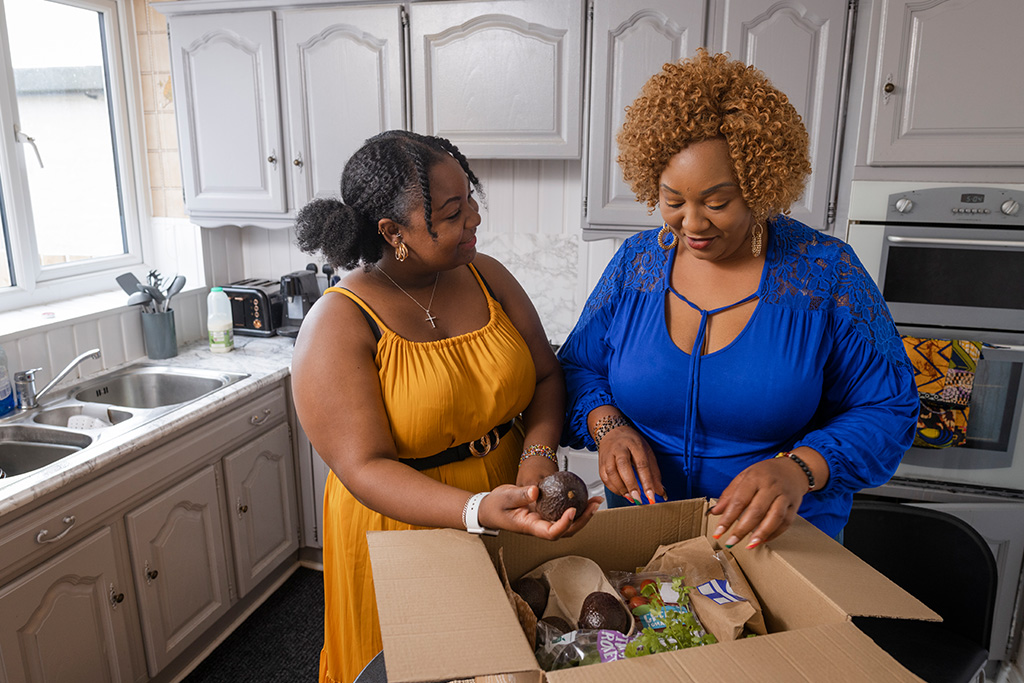Reduce Your Grocery Bills
With the cost of food increasing yearly, going to the supermarket can be an expensive jaunt—grocery prices last year saw some of the biggest increases since 1979. But before you commit yourself to a life of eating rice and beans and instant ramen, try these strategies that can help lower your grocery bills and make them easier to swallow.

Avoid temptation
Retailers tend to pull out the stops to entice you to buy things you don’t need, like those candy bars and bottles of soda at the checkout line. To avoid giving in to impulse buys that will only jack up your bills, make it a habit to create a grocery list for every trip, even your quick, last-minute ones. Then stick to it! You should also avoid prepared foods; they may be convenient, but they’ll just end up costing you more. For example, you can save a good amount of money by cutting your own veggies, shredding your own cheeses, and mixing up your own pancake mixes. Plus, your foods will be fresher, and you will know exactly what’s in them since you prepared them yourself.
Go local
If the grocery store produce is a bit too pricey, you could try buying from local food stands instead. Not only will you be supporting local businesses and getting fresher fruits and veggies, but you may also be lowering your carbon footprint by reducing the amount of energy required to get that food to you. Of course, you could always go super local by growing fruits, vegetables, and herbs on your balcony or in your own backyard.

Get a cash-back credit card
You can save plenty of dough with a cash-back credit card that gives you a percentage back of every dollar you spend. There’s a caveat though: cash-back credit cards tend to charge higher interest rates than other credit cards. So unless you can pay off your balance on time every month, it might be best to stick with a regular credit card. Otherwise, you may lose whatever you save and then some on extra charges.
Take advantage of rewards programs
For stores you frequent often, look into whether they offer money-saving rewards programs. For example, Target’s RedCard program offers a credit, debit, or reloadable option, which gives cardholders five percent off all Target purchases, including online, grocery pickup, and delivery orders. The card has no annual fees and provides free two-day shipping for most online purchases. Meanwhile, the Mastercard Capital One Walmart Rewards Card, which also has no annual fees, can earn you 5 percent back for orders on Walmart.com, 2 percent back for purchases made in Walmart stores (including grocery delivery and pickup orders), and 1 percent back everywhere Mastercard is accepted. But store cards also tend to charge high interest rates, so use them carefully.
Download shopping apps
Make the most of store apps—such as Target Circle, Whole Foods Market, and ones from Aldi, Kroger, ShopRite, and Walmart—that provide access to weekly circulars and alerts on deals, price cuts, and rewards. With many store apps, you can also check prices and see what’s in stock at your local store. You could also consider trying general shopping apps like Ibotta and Fetch, which aren’t store specific and may give you cash back no matter what store you shop at. To save money, just submit your receipts to get money back on qualifying goods.

Order subscription boxes
If you like the idea of saving while shopping from home, try a subscription box from Misfits Market to save up to 40 percent on groceries. The service negotiates with farmers and other food producers to procure food that would otherwise go to waste, such as organic fruits and vegetables that have minor appearance defects but are perfectly fine otherwise.
You could also subscribe to a meal-planning kit to get both groceries and delicious recipes. When you cook your own recipes, you often need to buy a whole bottle of something just to get two tablespoons. A kit, on the other hand, comes with everything you need for two to six meals and in only the amount you need. Entrees made with less-expensive kits, such as ones from EveryPlate or Dinnerly, can cost about the same as shopping for the groceries solo, but you won’t waste the time and money of getting them on your own.


















